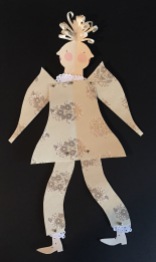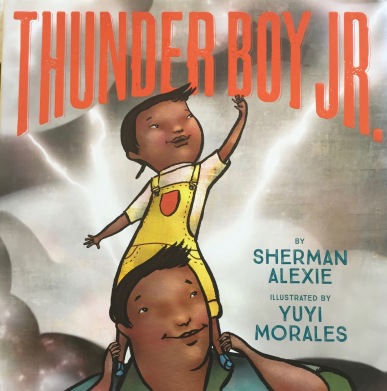Margaret, this one’s for you: a world-class exhibit of Chuck Close’s work at the Schack Art Center in Everett, WA. It’s a printmaker’s dream of nearly 90 works plus lots of process materials. Luckily, it’s open until September 4, so you can see it when you return from your London adventures.
 The show begins with Close’s first mezzo print, Keith/1972. The huge plates are scribed with a grid which recurs in his work in other print methods. You get the idea that he sees the world in fat pixels.
The show begins with Close’s first mezzo print, Keith/1972. The huge plates are scribed with a grid which recurs in his work in other print methods. You get the idea that he sees the world in fat pixels.
We visited the day after opening. As we went in the door, Dale Chihuly (he of the pirate eyepatch and the splendiferous art glass) was just leaving. Upstairs, Chuck himself, seated in his wheelchair, held forth in a crowded room flooded with sunlight.

Did you know that Chuck Close was born in the hamlet of Monroe, Washington? Back in 1940. Chuck’s dad died when he was 11 and he and his mom moved to Everett. Acacemics were difficult for him. Years later he discovered he has an unusual form of dyslexia. I wonder how much his grid-dled view is the result of a physiologically different way of seeing the world? The young Chuck was a skilled artist, however, and early on learned realistic drawing techniques, like perspective. After graduating from Everett High, he went on to major in art at Everett Junior College, then on to UW in 1960 and an MFA from Yale. At Yale, one of his classmates was sculptor Richard Serra.
After Yale, Close set up shop in New York. He got famous in the late 60’s for his nine-foot tall paintings of heads – his friends’ and his own. And heads are what you will see at this exhibit.
The great thing about this show is that process is on display with the imagery. It is fascinating to see working proofs and copper plates and lino blocks and graphs and printing hue notes. The works are etchings and aquatints and lithographs, silk screen, Japanese woodcut, reduction linocuts and even images made of paper pulp that was carefully color coded and poured into a grid onto a wet paper backing.
If I could have one of these beautiful pieces, I would choose Cecily/Felt Hand Stamp 2012. Again, the grid underlies the image. Felt stamps were used to apply oil paints on a silkscreen ground.
Cecily/2012, close up on right.
Much of Close’s work in this exhibit was created in collaboration with master printers. It starts with those huge mezzotints and ends with his most recent work.
Extra bonus: the exhibition space has a printshop in the back, and the sweet smell of ink seeps into the galleries.
Chuck Close: Prints, Process and Collaboration, through Sept. 5, the Schack Art Center, 2921 Hoyt Ave., Everett. General admission is $10; Schack members, seniors, military and youth pay $5; children are free. Check the Schack website, www.schack.org, to find out about free-admission Mondays. Hours are 10 a.m. to 6 p.m. Mondays through Fridays, 10 a.m. to 5 p.m. Saturdays and noon to 5 p.m. Sundays, Memorial Day and Labor Day. Closed Independence Day. Extended hours to 8 p.m. on June 16, July 21 and Aug. 18. Books about Close are offered for sale.



















 Ivan Bilibin, 1895
Ivan Bilibin, 1895 Galina and Olga Chichagova, poster design with text by A. Galena, 1925.
Galina and Olga Chichagova, poster design with text by A. Galena, 1925. Eduard Krimmer, How the Whale Got His Throat (Rudyard Kipling) 1926.
Eduard Krimmer, How the Whale Got His Throat (Rudyard Kipling) 1926. Issachar Ber Ryback for In The Forest (Leib Kvitko) 1922.
Issachar Ber Ryback for In The Forest (Leib Kvitko) 1922. Eduard Krimmer, Numbers, 1925
Eduard Krimmer, Numbers, 1925 Vera Ermolaeva, Top-Top-Top (Nikolai Aseev), 1925
Vera Ermolaeva, Top-Top-Top (Nikolai Aseev), 1925 Illustrations for The Flea (Natan Vengrov) by Iurii Annenkov, c. 1918
Illustrations for The Flea (Natan Vengrov) by Iurii Annenkov, c. 1918 Konstantin Rudakov, Telephone, 1926
Konstantin Rudakov, Telephone, 1926 Evgenia Evenbakh, The Table, 1926
Evgenia Evenbakh, The Table, 1926 Aleksandr Deineka, Electrician (B. Uralski), 1930
Aleksandr Deineka, Electrician (B. Uralski), 1930 Tevel Pevezner, The Cow Shed (Evgeny Shvartz), 1931
Tevel Pevezner, The Cow Shed (Evgeny Shvartz), 1931 Tevel Pevezner, The Poultry Yard (Evgeny Shvartz), 1931
Tevel Pevezner, The Poultry Yard (Evgeny Shvartz), 1931


 Georgii Echeistov, What It Carries Where It Travels, 1930
Georgii Echeistov, What It Carries Where It Travels, 1930 Unknown illustrator, First Counting Book (F. N. Blekher), 1934
Unknown illustrator, First Counting Book (F. N. Blekher), 1934 Maria Siniakova, Circus (Nikolai Aseev), 1929
Maria Siniakova, Circus (Nikolai Aseev), 1929 Vladimir Lebedev, Circus (Samuil Marshak) 1925
Vladimir Lebedev, Circus (Samuil Marshak) 1925
 Vladamir Konashevitz, unpublished illustration for Pictures For Little Ones, 1925
Vladamir Konashevitz, unpublished illustration for Pictures For Little Ones, 1925 Vladamir Konashevitz, Mugs, 1925.
Vladamir Konashevitz, Mugs, 1925. Aleksandr Deineka, The Red Army Parade, 1930
Aleksandr Deineka, The Red Army Parade, 1930







